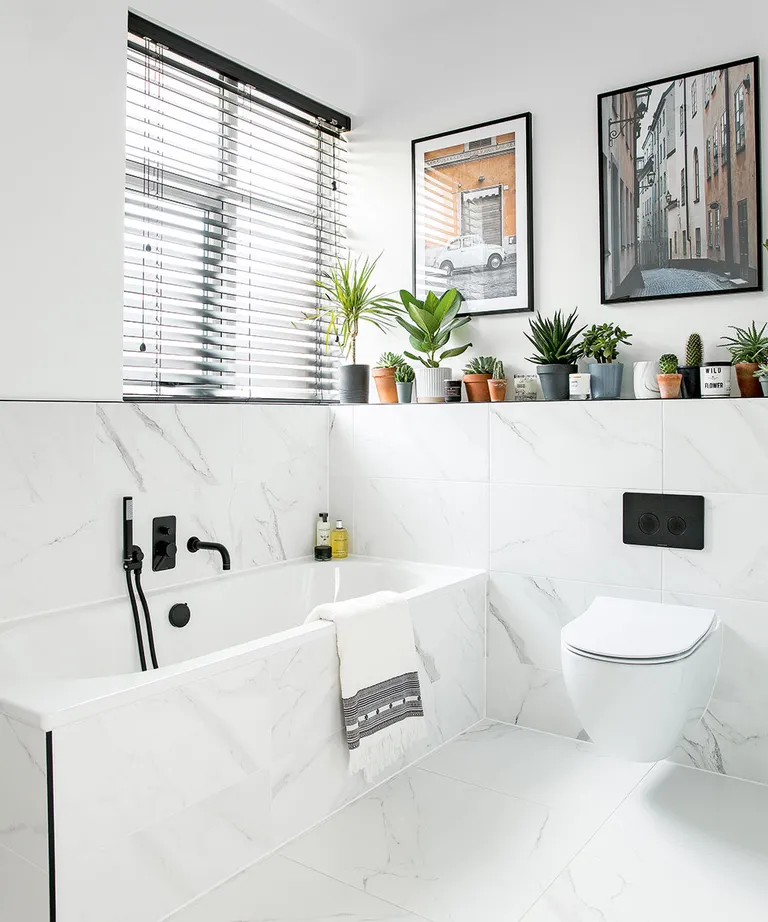[ad_1]
When specified correctly and installed within a well-insulated home, underfloor heating is one of the most efficient ways to heat a building. Plus, in a contemporary property, it’s a must-have feature that many people would expect to see. In that sense, it has the potential to add value to your home – but there are a few important provisos to bear in mind before charging ahead with your installation.
‘The key to any good underfloor heating system is proper design,’ says Matt Densham at Robbens. ‘While heat loss calculations are becoming less important due to better insulation standards nowadays, it’s still important to make sure UFH is designed to perform well.’
How efficient is underfloor heating?
The first important point to make is that UFH requires a lower input temperature than a radiator to work effectively. ‘Due to their small surface area, radiators typically need 70°C-80°C to heat a building effectively. Because the floor area of a room is much greater, the UFH requires a lower input temperature, sometimes only 35°C,’ says Matt Densham.
This lower input temperature is where the energy-saving potential lies – and if you’re saving energy, you’ll be able to claw back money on your utility bills, too. ‘Typically, UFH will be 10–20% more efficient than radiators,’ adds Matt Densham.
Here, we sum up the key factors for getting the best out of your underfloor heating system.
1. Heat effectiveness

Image credit: Future plc/Simon Whitmore
When comparing underfloor heating to a conventional radiator system, it’s important not to focus solely on what temperature each of the systems run at. It is also the way in which heat is distributed.
‘Radiators produce a much higher heat locally and rely on the air circulation they create to distribute heat throughout the room,’ says Michael Schienke, director at Vorbild Architecture. ‘A comparable lower heat as produced by underfloor heating is much quicker and more uniformly distributed throughout the space.’
UFH produces radiant heat, whereas radiators rely on convection to spread heat around the room. The air warmed by a radiator moves upwards and once it has cooled, it moves downwards to be reheated by the radiator. Ultimately, this establishes a flow of warm and cool air throughout the space, whereas UFH delivers an even spread of heat, resulting in impressive internal comfort levels.
2. Energy usage
Although underfloor heating operates at a lower temperature, it’s capable of achieving the same level of warmth and comfort throughout your home. This is where the energy saving comes in. ‘UFH systems are estimated to use 15-40% less energy than a radiator,’ says Luciana Kola, marketing manager at Uponor.
This sustainable benefit stems from the fact that UFH works by warming an entire room evenly. This is more efficient than traditional systems like radiators, where heat is lost by the air rising in only one area.’
The even spread of heat also means that you can rule out having hot spots and chilly corners within the same room, instead maintaining the same level of comfort throughout.
To ensure that heat is distributed evenly across the whole space, effective installation of your system is vital. For instance, pipework must be laid at neat, regular intervals – irregular spacing is therefore a key red flag to look out for during the installation process.

Image credit: Future Plc/Lizzie Orme
3. Running costs
The initial outlay for underfloor heating costs – supply and installation – is greater for UFH than radiators. The cost savings of UFH will be delivered over the long term. As we already know, your boiler (or other heat source) won’t have to produce as much heat to warm underfloor heating as it would for radiators. Maximum financial savings will be delivered when you’re running UFH in a thermally-efficient home, minimising the amount of heat that’s wasted as it leaks outwards – more on this later.
It’s also important to ensure you choose the right system for your house. Running costs for electric systems will always be higher than those for a water-based system. Simply because electricity costs more per unit than gas. Therefore, installing electric UFH across a large area or in many rooms won’t be as cost-effective.
Electric underfloor heating works best when it’s fitted in small areas (eg bathrooms), so the running costs remain manageable.
4. Fabric first approach for sufficient insulation

Image credit: Future plc/Dominic Blackmore
To ensure your UFH system runs efficiently, insulation is a key factor. Without an airtight thermal fabric, precious heat generated by your underfloor heating will be lost via the walls, floors and roof.
‘Without the correct insulation, no heating system or source will effectively and efficiently heat your home,’ says Tom Edmunds, general manager at Wunda Group. ‘Poor insulation requires higher heating temperatures, which will not provide a comfortable living environment.’ In a well-insulated home, a low temperature heat distribution system like underfloor heating will be able to run optimally.
5. Incorporating renewables
If you live in a well-insulated home and you want to take your heating system to the next level, one of the best ways to maximise its efficiency is by pairing it with a renewable heat source. Heat pumps draw natural heat from the earth or air, converting it to a level of warmth that can be used to power your home’s heating and hot water.
As heat pumps operate at a lower grade heat than boilers (the optimum temperature is between 30°C and 35°C), they are well suited to lower temperature heat distribution systems, like underfloor heating. Radiators run at a much higher temperature, so a heat pump would have to work a lot harder to heat a radiator up to the required level to heat your house.
The post How efficient is underfloor heating? See the energy and cost savings appeared first on Ideal Home.
[ad_2]
www.idealhome.co.uk










